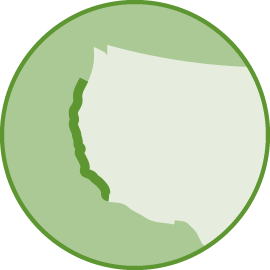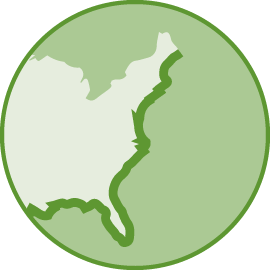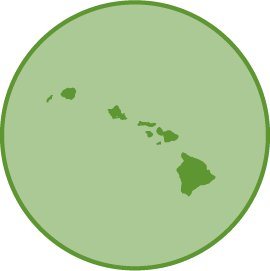Living in the south, "hurricane season" is a yearly thing. Like earthquakes (more on that HERE), wildfires, and tornados in other parts of the nation, destructive weather is part of life in the southeast. But, they can also hit the west coast and central Pacific (typhoons).


Eastern Pacific Hurricane Season (includes Baja): May 15-November 30.

Atlantic Hurricane Season: June 1-November 30.

Central Pacific Hurricane Season: June 1-November 30.
Last year, we got hit by Hurricane Sally.
At landfall here in West Florida, it was about 2 MPH shy of the Category 3 hurricane mark. And since it was a slow moving storm, it sat on top of us for almost TWO DAYS before moving on. We had repeated tornado alerts throughout the first night (!)... several tornados touched down just a few miles from our home. All while the wind and rain was cranking. It was dark, the rain was coming down sideways in buckets, and it was NOT safe to be outside as it was literally hitting the fan. All you could do is hole up, and hold on. Hurricanes aren't just a coastal thing either, these storms move inland a raise hell with wind and rising water.
I'd never seen anything like it.
Luckily, we were ready with provisions laid away in advance to include a generator and fuel for the aftermath. But had that storm been much worse, it might not have mattered. It's a scary thing when it's on top of your house testing out every shingle, brick and board.
When the next one hits, I hope we're all ready not only to ensure our own well being and that of our families, but to be leaders in the community who help our neighbors. Our rigs, our gear, our background and our skills as Adventurers make us particularly suited to "rising to the challenge" of a regional or even national emergency. As such, a proactive approach is best and "being ready" or "prepping", while nutty to some, just makes sense. And it's worth educating your friends and neighbors about.
This thread is dedicated to being ready.
Eastern Pacific Hurricane Season (includes Baja): May 15-November 30.
Atlantic Hurricane Season: June 1-November 30.
Central Pacific Hurricane Season: June 1-November 30.
Last year, we got hit by Hurricane Sally.
At landfall here in West Florida, it was about 2 MPH shy of the Category 3 hurricane mark. And since it was a slow moving storm, it sat on top of us for almost TWO DAYS before moving on. We had repeated tornado alerts throughout the first night (!)... several tornados touched down just a few miles from our home. All while the wind and rain was cranking. It was dark, the rain was coming down sideways in buckets, and it was NOT safe to be outside as it was literally hitting the fan. All you could do is hole up, and hold on. Hurricanes aren't just a coastal thing either, these storms move inland a raise hell with wind and rising water.
I'd never seen anything like it.
Luckily, we were ready with provisions laid away in advance to include a generator and fuel for the aftermath. But had that storm been much worse, it might not have mattered. It's a scary thing when it's on top of your house testing out every shingle, brick and board.
When the next one hits, I hope we're all ready not only to ensure our own well being and that of our families, but to be leaders in the community who help our neighbors. Our rigs, our gear, our background and our skills as Adventurers make us particularly suited to "rising to the challenge" of a regional or even national emergency. As such, a proactive approach is best and "being ready" or "prepping", while nutty to some, just makes sense. And it's worth educating your friends and neighbors about.
This thread is dedicated to being ready.
